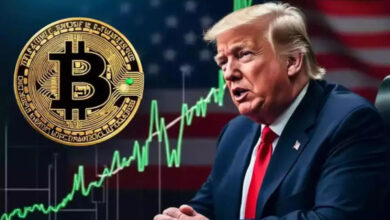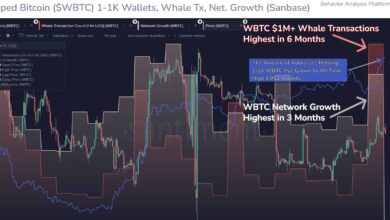
Bitcoin Trading Volume Hits Post-Halving High Amid ‘Extreme Fear’
Bitcoin Trading Volume: The Bitcoin fear and greed indicator saw its lowest values since July 2022, as trading volumes reached unprecedented levels during market turbulence. During this fourth Bitcoin halving cycle, trading volume reached a new all-time high as Bitcoin transactions on crypto exchanges surged amidst tumultuous market circumstances.
The precipitous decline in the value of several of the most popular cryptocurrencies on August 5th caused traders in these markets to lose a staggering $600 million. In light of this, the crypto community witnessed the Bitcoin greed and fear index drop to 17 out of 100, indicating ‘severe fear,’ which is the lowest level since July 12, 2022.
Consequently, some investors dumped their Bitcoin holdings for a pittance, while others pounced on the steep discounts, purchasing BTC at the $50,000 level. Trading volume on major Bitcoin exchanges surpassed $1.14 billion USD on August 6th, according to data from Blockchain.com.
Blockchain.com gets data from the best cryptocurrency exchanges and a few OTC markets. Consequently, the stated total trading volume is significantly lower than the actual one.
US Economic Data and Middle East Tensions Weigh on Crypto Prices
Rising fears of a U.S. economic crisis are a significant factor in the current decline of the bitcoin market. The basis of this fear is the poor unemployment rate in the United States, which hovered around 4.30% last week, up from 4.10% the previous month. The previous peak was reached in November 2021. However, earnings per hour only climbed by 0.2%, significantly less than the 0.3% gain that was anticipated.
Consequently, stock and cryptocurrency markets worldwide saw falls, especially in Asia, Europe, and the Middle East. Market volatility has been heightened by recent interest rate hikes in Japan and downbeat economic data from Germany, further complicating the issue. If there are more indications of economic slowdown, analysts are worried that market volatility will rise.
Economic issues and the growing tensions in the Middle East exacerbate market uncertainty. The possibility of an attack on Israel by Hezbollah and Iran was raised by U.S. Secretary of State Antony Blinken, who has since advised President Biden to confer with the National Security Council. Hezbollah has threatened to increase its attacks, while Israel is contemplating a preemptive strike on Iran.
Bitcoin ETFs Bleed while Ether ETFs Thrive
Even Bitcoin exchange-traded funds (ETFs) have felt the effects of rising economic anxiety, with $168 million leaving the market on August 5th. According to statistics provided by Farside Investors, the two significant contributions were the Grayscale Bitcoin Trust (which lost $69.1 million) and the ARK 21Shares Bitcoin ETF (which lost $69 million).
Bitwise Bitcoin ETF, Grayscale Bitcoin Mini Trust, and VanEck Bitcoin ETF all saw inflows of $2.9 million, $3 million, and $21.8 million, respectively, whilst BlackRock’s iShares Bitcoin Trust saw no inflows at all. Nevertheless, data from Farside shows that the spot Ethereum ETFs received a net inflow of $48.8 million, with $47.1 million going to BlackRock’s iShares Ethereum Trust.
VanEck received $16.6 million for its Ether products, while Fidelity received $16.2 million. This difference shows that investors are still unsure what to do; some are selling their assets to cut losses, while others are increasing their bets.







